 |
| This group performed The Bomba, a traditional dance of the Afro-Ecuadorian cultures. Yes, he’s dancing with a decorated bottle on his head. |
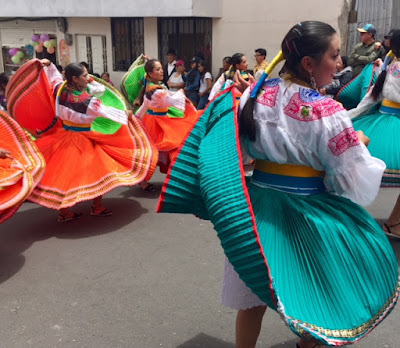 |
| The brilliant colors at these Andean Festivals are amazing! |
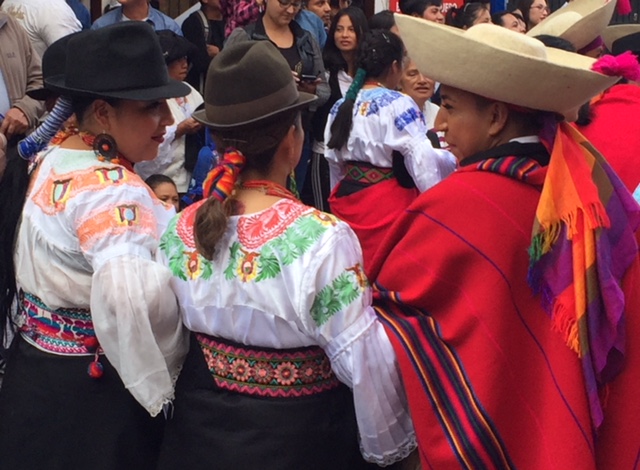 |
| Some of the clothing that the Indigenous wear is machine made, but most of it is hand woven and hand embroidered. Always stunning! |
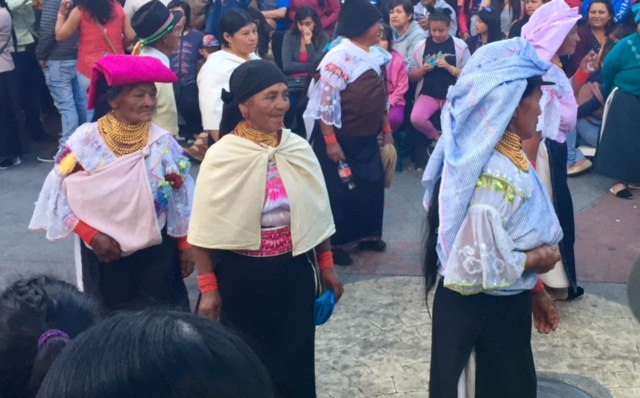 |
| The variety of headwear is always interesting. If I was to guess, I think much of it was born from the necessity to keep the intense sun off of their heads. |
 |
| I would bet this man has been dancing in this parade his whole life! |
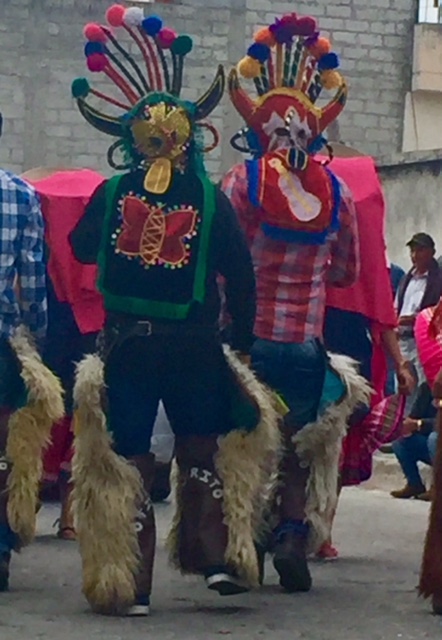 |
| The Spirit of the Huma (with his two faced mask representing positive and negative energies) is always a prominent feature in every Indigenous parade. |
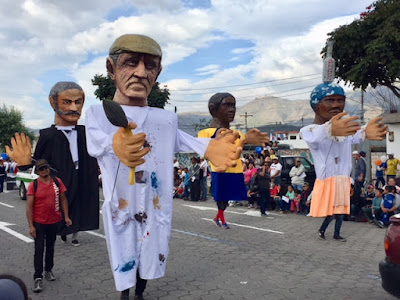 |
| These large clay puppets are designed and made by artists in this area, so they were also featured in the festivities. |
This was definitely the funniest thing I saw. First, the man standing on the left had this costume that made it look like he was being carried by another little man. Then, some other guys taped a chicken to an electric cart, but made it look like the chicken was pulling him. I know, I know. It was so cruel to the chicken! But don’t worry, I’m sure the chicken was his dinner that night anyway.
The craziest thing I’ve seen is “Vaca Loca”! Literally, “Crazy Cow”! The evening starts with a big music concert. Then they set fire to a giant bamboo structure that is saddled with fireworks. As each section explodes, it ignites the next section to create a huge long-lasting display of pyrotechnics.
| Finally, the top part of the structure sets off fireworks into the sky. |
| At the same time, a man starts running around the base carrying a giant structure of exploding fireworks. He’s supposed to be the “Crazy Cow”. |
| As you can see, there’s no safety barriers or guidelines in these festivals. Ecuadorians love their pyrotechnics and it’s your problem if you don’t stand back far enough. |
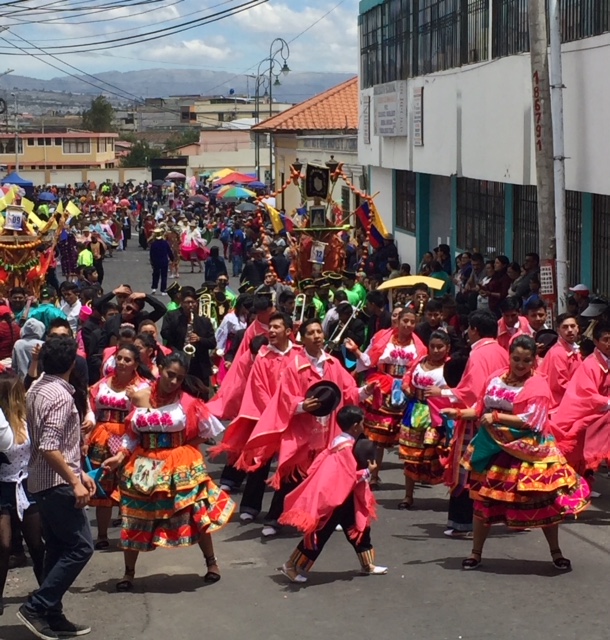 |
| The street was alive for hours as the parade wound its way through the streets of Latacunga and up a steep hill to a symbolic cross at the top. |
 |
| These characters are the Huacos. They grabbed people from the crowd to cleanse them with palm fronds and bones, supposedly preparing them for the coming of Mama Negra.
|
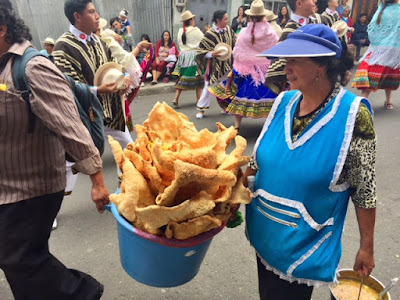 |
| Ice cream, cotton candy and caramel apples are favorite festival foods. But it’s not a festival in Ecuador without the large fried pieces of pig skin! |
One of the most amazing parts of Mama Negra was the number of communities or families who created and carried an Ashanga. This is their offering to Mama Negra, and it always included a whole pig, other traditional meats like cuy, full bottles of liquor and varieties of fruit. It is so heavy, men had to take turns carrying it up the street and then resting it on a stool. Watch the videos and you’ll get the idea!


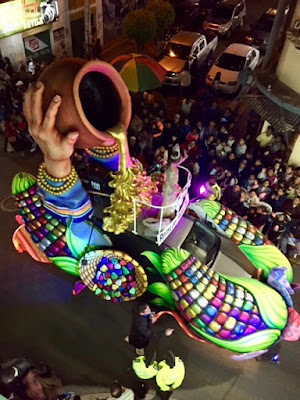
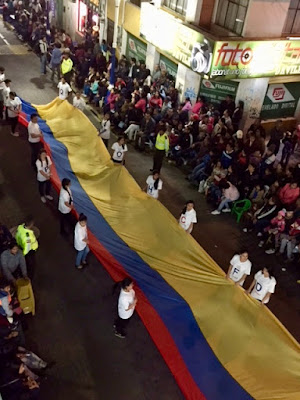
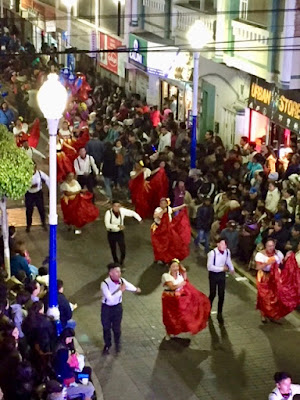
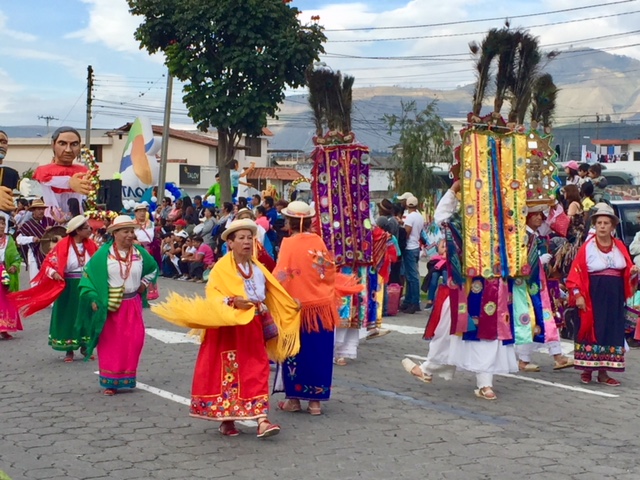
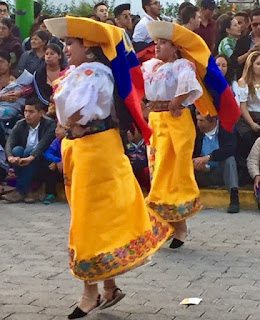

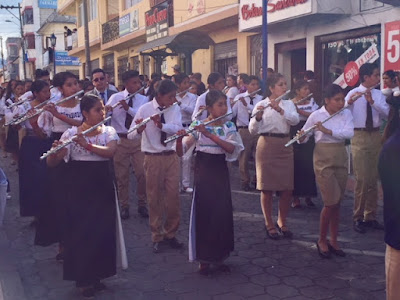
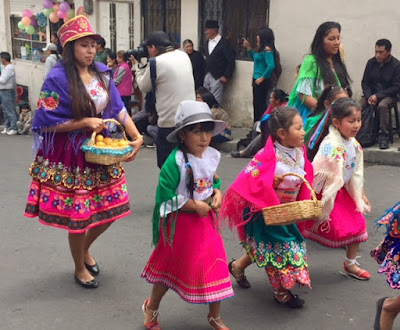

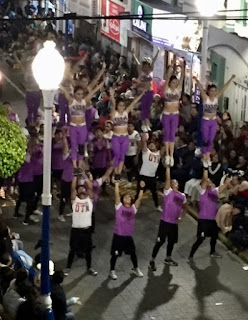

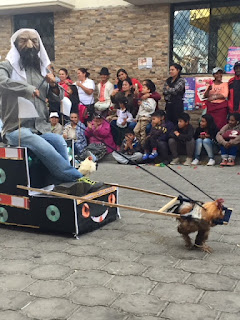

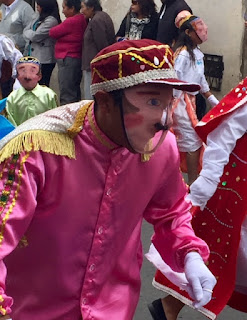


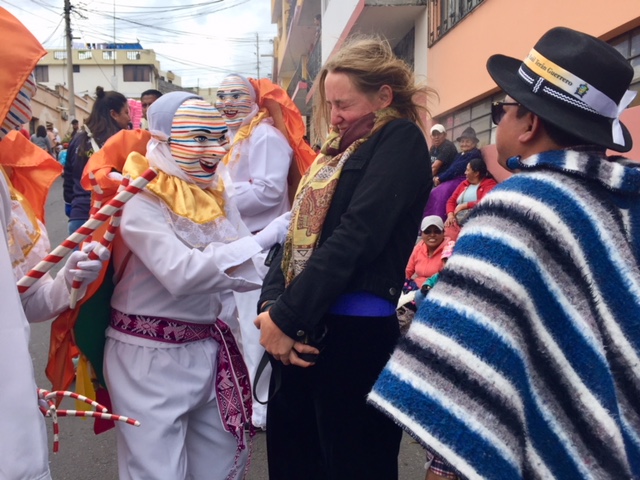



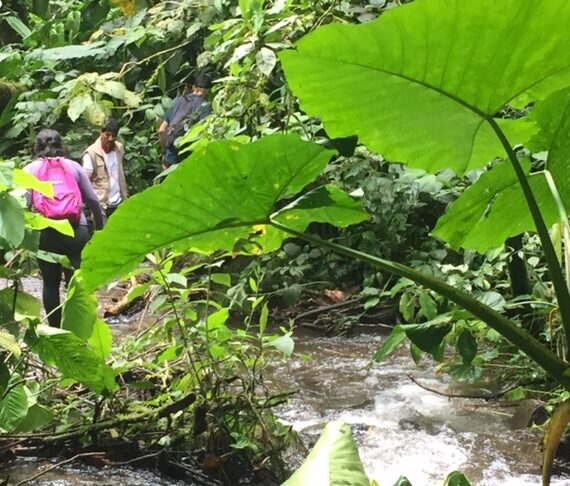

Ms. Long
Absolutely amazing! Thank you for sharing, Becky, and I hope your rib is okay! Hugs!!!